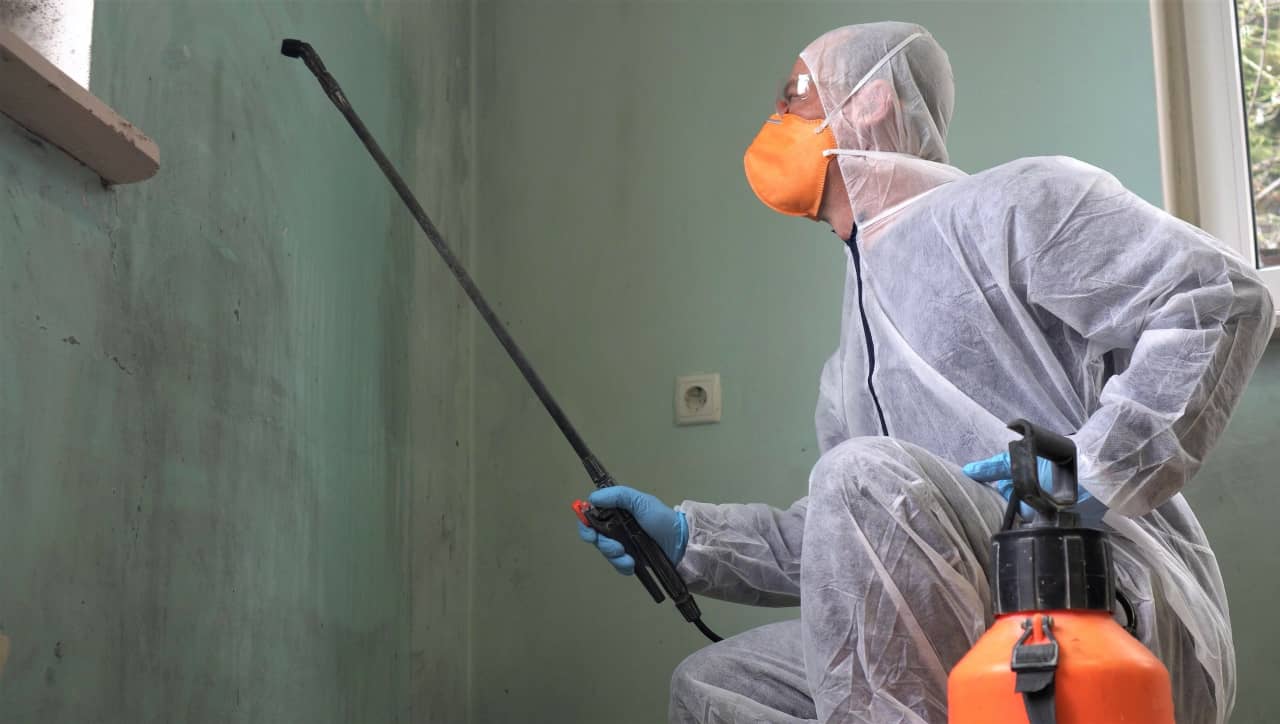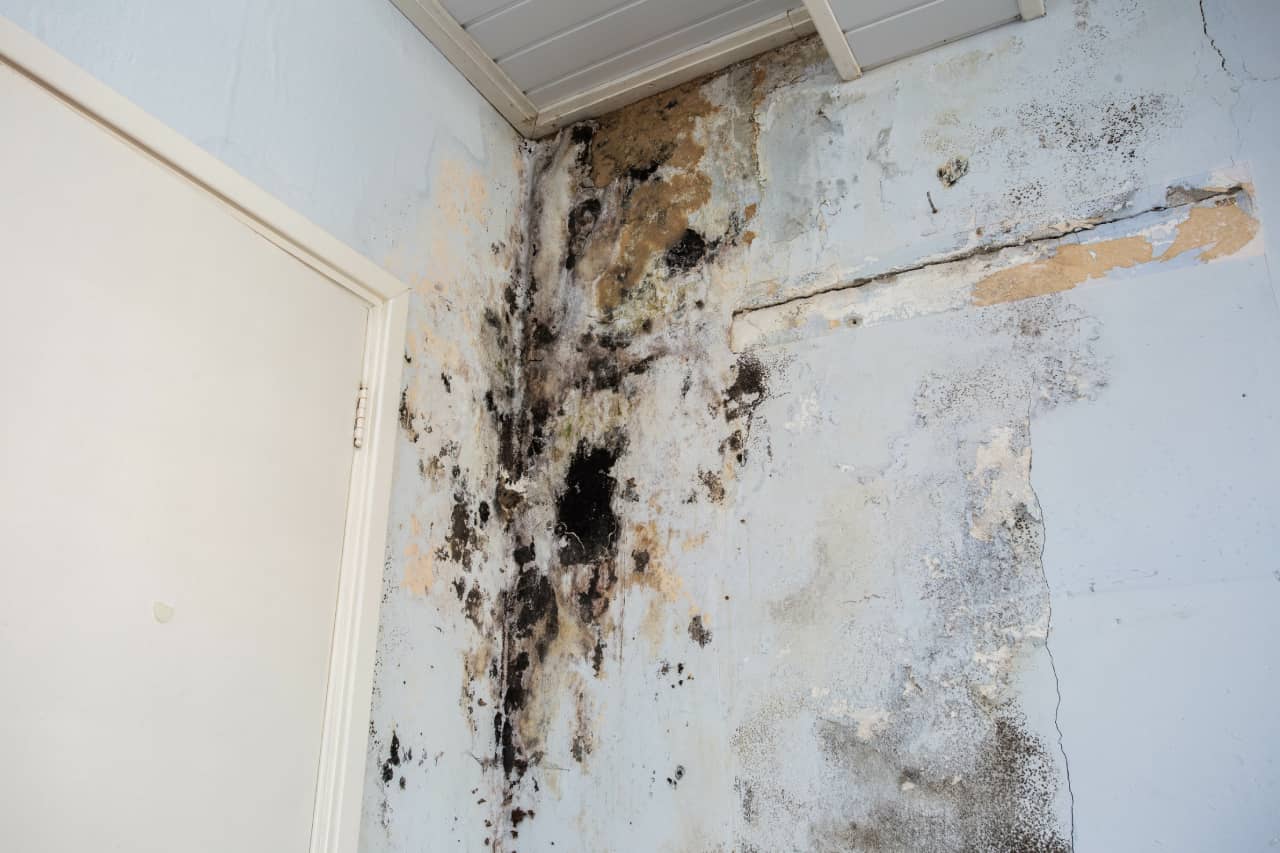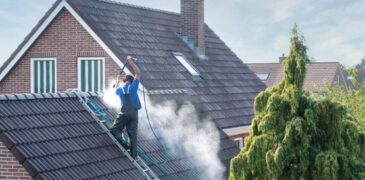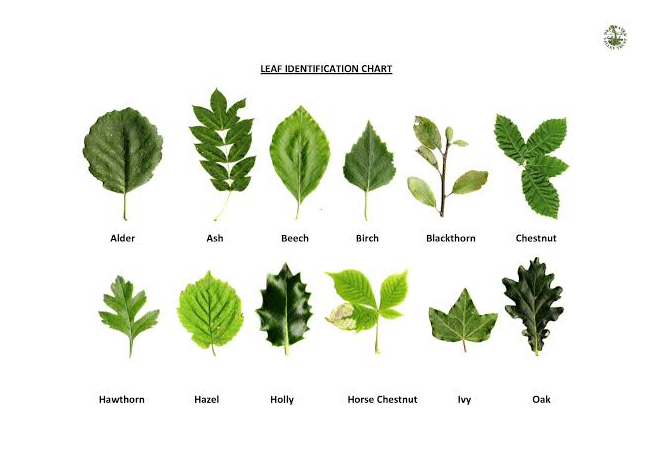Mold and the human body don’t mix. When inhaled, mold can lead to shortness of breath, itchy eyes or skin, and complications bad enough to warrant a trip to the hospital. If you or a member of your family has a known allergy or respiratory illness, it’s imperative to stop mold growth at home before they get a chance to flourish.
Contrary to popular belief, mold comes in various colors, not just the typical green. Identifying mold growth starts with knowing the hues – primarily black, pink, and brown. Here’s an in-depth look into these colors and how bad they can be when left alone:

Black Mold
Black mold (can also appear as dark green) refers to a group of species of mold like Stachybotrys chartarum. Coincidentally, this species was first discovered in 1837 from wallpaper taken from a house in Prague, Czech Republic. It was also associated with a minor outbreak in Eastern Europe in the 1930s where animals succumbed to nervous disorders, among others. (1)
S. chartarum grows well in cellulose-based material, which means anything that has paper or wood in it. Its spores settle in the soil, so a rush of water from flooding or broken plumbing can introduce them into the ceiling, walls, and floor. (1)
Because of the black mold’s long history of making people ill, dealing with it on your own can be dangerous. Homeowners with this unwanted growth should consult websites that offer mold remediation services like https://rescueclean911.com/. They have the expertise, right equipment, and skills to handle the situation safely.
Pink Mold
Pink mold may or may not be mold but can still be a health risk at home. In this case, two typical household growths fit this description.
The first is Serratia marcescens, a bacterial growth characterized by its reddish pigment almost akin to blood. It used to be relatively harmless, but later studies have implicated it in various health issues. Some of these include pneumonia, urinary tract infection, and meningitis. (2)
The second is Aureobasidium pullulans, a mold that can thrive on human hair and skin as much as in moist environments. One case study involving a 49-year-old AIDS patient shows that this fungus can cause fungemia, a rare fungal infection of the bloodstream. In the patient’s case, identifying the infection can take as long as a month from the first appearance of symptoms. (3)
Both species grow in different environments. S. marcescens loves to thrive in the bathroom, particularly the tile grout, while A. pullulans prefer growing on organic material like damp wooden windows (though it also thrives in the bathroom). Unless the bathroom shares the same color scheme as these growths, spotting them is easy.
Brown Mold
Some mold species can appear brown (sometimes black). One example is A. pullulans, where they can appear pinkish at the beginning and turn brown as time goes on. While it takes on a darker shade, the mold can be hard to spot on wood surfaces.
Another is Stemonitis splendens, which take on the appearance of chocolate-colored slimy tubes and thrive on rotting wood. Although not as toxic as the other species mentioned here, there are still many uncertainties surrounding this mold. It’s safer to assume that even harmless-looking mold can pose some risk. (4)
Precautions for Homeowners
To summarize, where there’s enough moisture, expect a mold colony to be there. This growth is a far bigger problem than you might realize, not just for the health effects explained previously.
For starters, many doctors can identify illnesses but not mold-induced sickness in general. In one doctor’s words, they may actually be treating mold-induced sickness but don’t realize that it is. It doesn’t help that one in four people are vulnerable to mold infection due to their genetic makeup. It’s even worse for those with allergies. (5)

When faced with mold in one part of the house, here are some precautions worth taking:
- Assume that the mold’s spores have spread all over the house. It can take as long as three weeks for them to be visible, which is why it’s crucial to test for mold immediately.
- Cordon off the area with the mold growth to lessen the chance of anyone in the home inhaling the spores. A constant stream of spores into the body can be dangerous.
- If there’s mold despite the lack of recent flooding, a leaky pipe or roof is most likely to blame. Make sure to contact the appropriate repair service on top of mold remediation.
- Avoid running the HVAC system in the meantime, as the spores can use it to spread throughout the house more rapidly.
The choice of handling the cleanup yourself or enlisting a mold remediation service depends on the extent of the infestation. According to the Federal Emergency Management Agency (FEMA), it’s safe to handle mold growth that’s no more than 25 square feet big by yourself. If this is the case, always take the following precautions:
- Wear personal protective equipment when cleaning, such as a mask and gloves. If there’s one thing that this article has made clear, some mold can grow on the skin.
- Take extra caution in disposing of mold-infested materials like drywall and carpeting, let alone moving them. The slightest disturbance can trigger the colony to let loose its spores.
- Ensure adequate ventilation of the cordoned area. A closed room will make moisture condense, giving the mold more places to thrive.
- Bleach and ammonia are commonly used in disinfecting, but take care not to mix them. The solution can produce toxic gases.
If the affected area covers over 25 square feet, cleanup is better left to a professional. Refer to this video for a brief on how remediation services work to get rid of household mold:
Rescue Clean 911 – Handling the Tough Jobs with a Soft Touch
Conclusion
Whatever color it takes, mold growth is bad news for everyone. Households can find themselves paying for more than just mold remediation – the expenses include medical treatment, lost days at work, and others. If something in the ceiling or wall looks and smells funky, take the necessary steps to get rid of it before it worsens.
References
- “Stachybotrys chartarum: The Toxic Indoor Mold”, Source: https://www.apsnet.org/edcenter/apsnetfeatures/Pages/Stachybotrys.aspx
- “Serratia marcescens”, Source: http://www.antimicrobe.org/b26.asp
- “Fungemia caused by Aureobasidium pullulans in a patient with advanced AIDS: a case report and review of the medical literature”, Source: https://www.ncbi.nlm.nih.gov/pmc/articles/PMC5982151/
- “How Dangerous is Brown Hairy Mold Found in Bathrooms?” Source: https://inspectapedia.com/mold/Brown_Hairy_Mold.php
- “Mold Statistics and Facts”, Source: https://realtimelab.com/mold-statistics/




